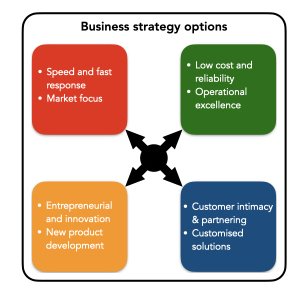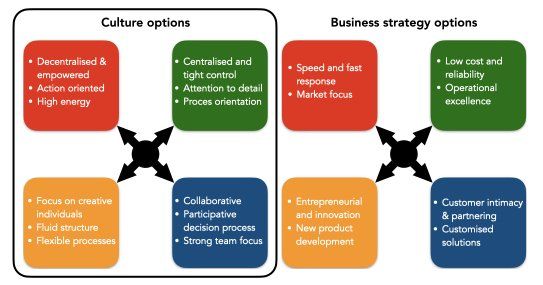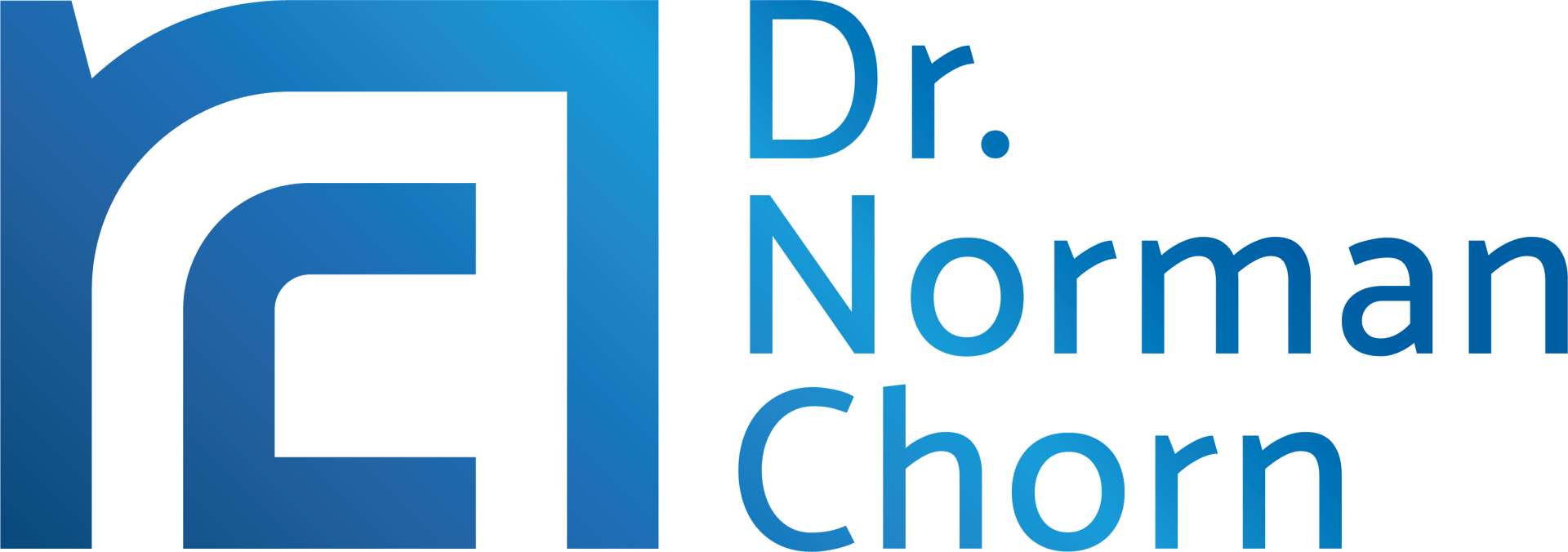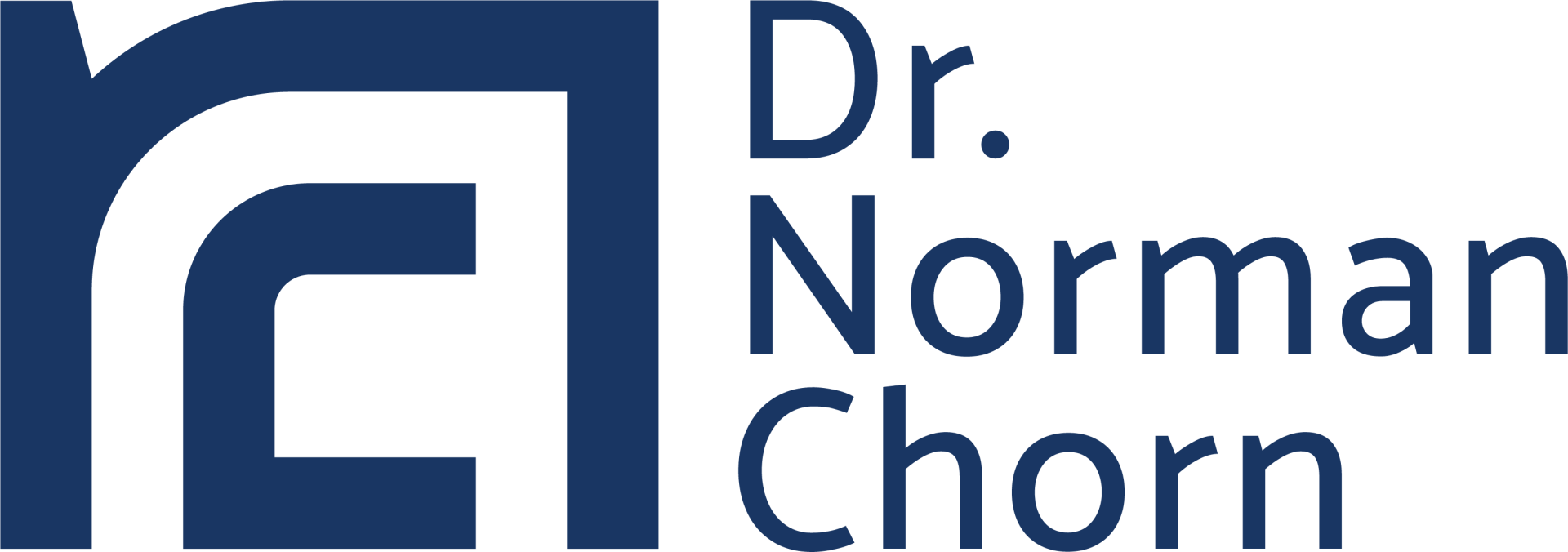What drives organisational performance
There is a wide range of views on the definition of organisational performance. Profitability? Market share? Good products? Despite the lack of a common measure for performance, the question of what drives performance is more easily answered.
We have given up the search for the strategy, culture or style that produces the best performance in any condition. Instead, it seems more sensible to recognise that any strategy is only appropriate in a given set of market or competitive conditions. Similarly, we realise that a given culture or leadership style is only appropriate in a given strategic situation.
While this basic principle is easily understood, how can it be applied? We think driving organizational performance may lie in the concept of “strategic fit”.
What is Strategic Fit and How Does it 'Fit In'?
Strategic “fit” considers the degree of alignment between your strategy, culture and leadership style. In this sense, alignment refers to the “appropriateness” of the elements to one another.
Research reveals that superior performance (measured in a variety of ways) is associated with high degrees of alignment between strategy and culture — ie: a good “fit” between strategy and culture.
This is explained by the fact that culture has a significant influence on the organisation’s capabilities in two ways:
- By acting as a filter to constrain strategic options to those that are compatible with the existing culture (1)[1]
- By requiring cultural change to enable the organisation to effectively implement its strategy (2)[
In both cases, we see that the “fit” between culture and strategy is closely associated with the organisations ability to execute strategy and, therefore, improve an organisation’s performance.
Leadership has a critical role to play in this “fit’ between culture and strategy. Not only does leadership influence and guide the overall strategy, culture is also shaped by the style and key behaviours of leaders in the organisation.
3 Steps Leaders Can Take to Strategically Align Culture With The Business Strategy
- Clearly define the business strategy with respect to “how we will win” in the market
- Identify the key elements of the culture to support the strategy
- Adopt a leadership style that will actively shape the required culture.
These steps are further outlined below.
1. Clearly Define The Business Strategy With Respect to 'How we Will Win' in The Market
The purpose of strategy is to achieve some form of competitive advantage. Therefore, strategy should answer the question of “how will we win?”, or “what do we do to earn our customers’ business in this market?”.
Competitive advantage is achieved when the business has a pronounced focus on the source of competitive advantage. Focus is achieved through a purposeful over-allocation of resources to a particular set of initiatives, rather than evenly spread through all initiatives. Focus is different to balance – it is a deliberate imbalance of resource allocation.
There are 4 focused pathways to choose from to create competitive advantage in strategy. These are represented in the diagram below by individual colours.
Recognise that your strategy may have elements of all four pathways — but there should be clear dominance in one to reflect the required focus.

2. Identify The Key Elements of The Culture to Support The Strategy
Since the culture is closely associated with the organisation’s capability to implement strategy, the key characteristics of the culture should match those of the strategy. (3)
Research reveals that the way you do things inside the organisation will drive the way things are done outside the organisation — ie: your strategy in the market.

3. Adopt a Leadership Style That Will Actively Shape The Required Culture
Leaders play a key role in shaping and modelling the culture in an organisation. We know that the leadership style and approach should meet the demands of each situation, and we have identified the specific elements of leadership that are appropriate to reinforce and enable different cultural types.

Creating a Strategically Aligned Culture
Three points are worth noting as we consider culture alignment:
- Strategic fit (alignment) is an ideal state to be strived for. However, given the dynamic state of markets and organisations, it is rarely achieved on a permanent basis. Nonetheless, it is a worthy goal due to its positive impact on performance
- A primary role of leadership is to achieve alignment by actively managing the interdependencies between market, strategy, culture and leadership
- There are occasions where leaders might deliberately create a misalignment — such as when there is a need to shift strategy. The resultant tension will usually give rise to a change in culture and leadership to create a new alignment for the business.
The moving “in” and “out” of alignment is a common phenomenon in a fast changing environment. We know, however, that organisations cannot survive in the long term if there is misalignment of culture and strategy. That is why it is important to include future strategy when you plan the alignment of your business. The purpose of strategy is to position and align the organisation for the future.
(1) Strategy: Beyond the Hockey Stick. Bradley, Hirt and Smit, McKinsey & Co, 2018
(2) Strategic Alignment. Chorn, Woodslane Press, 2010
(3) The Alignment Theory: Creating Strategic Fit. Chorn, Management Decision, 29,1, 1991
About Norman
Dr Norman Chorn is a highly experienced business strategist helping leaders build highly successful and resilient organisations. Well known to many as the ‘business doctor’!
By integrating the principles of neuroscience with strategy and economics Norman achieves innovative approaches to achieve peak performance within organisations.
Subscribe to our regular articles, insights and thought leadership




